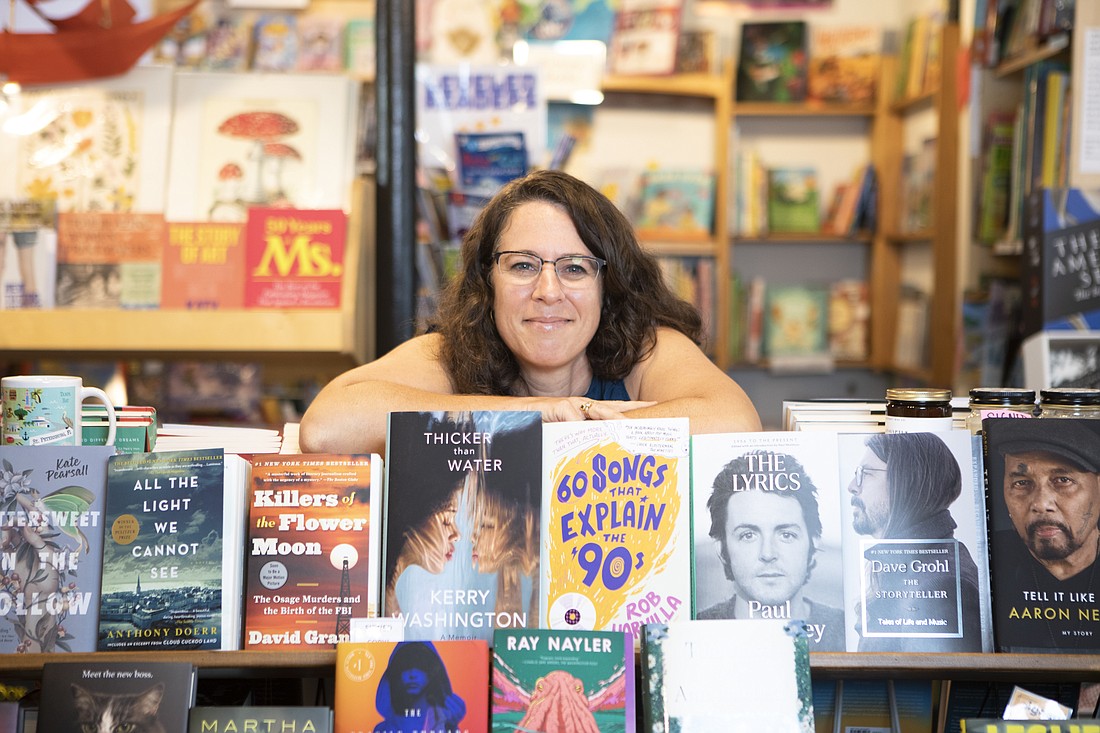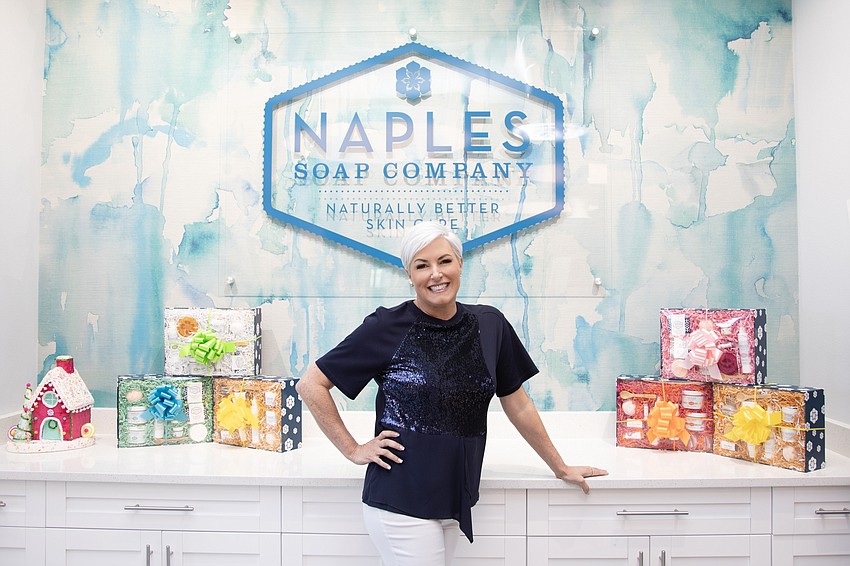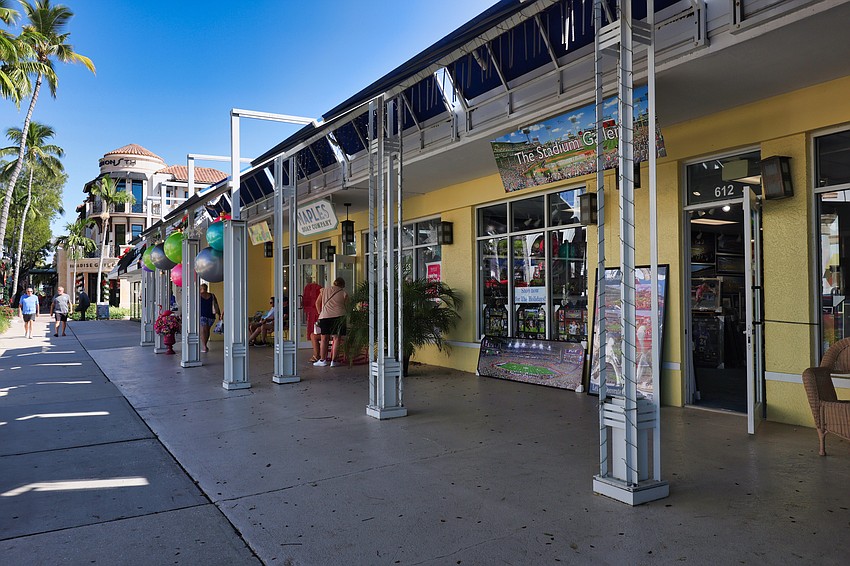- July 26, 2024
-
-
Loading

Loading

Remember how cryptocurrency was supposed to change the world? Well, not that long ago, people believed e-commerce would do that as well.
No longer, the thinking went, would the well-wired citizens of the world leave the comfort of their homes to do something as mundane as shop in a building. Everything they'd ever want would be a button and delivery driver away.
It was, and in some places still is, seen as the future. Just like digital currency was.
But something interesting happened along the way. While e-commerce is here to stay and has tremendous advantages, the retail store has not gone away. In fact, in some places, brick-and-mortar is stronger than it ever was.
And as we head into the holiday shopping season, some merchants across Florida are staffing up at stores, stocking up on inventory and getting ready to do what they do best — sell to customers in person.
So what happened? Why, despite the predictions from experts, is brick-and-mortar still around and in places thriving?
Simple. The one thing e-commerce can’t do, try as it might, is replicate the human condition. People, it turns out, like to touch and feel and interact.
“The web was such a great thing when all the shopping went online because of convenience,” says Alsace Walentine, founder and co-owner of Tombolo Books in St. Petersburg. “But what do you lose? You lose experience. And so (coming into the store is) a different kind of retail experience than clicking and receiving. I think that's the crux of what it is. People appreciate it.”
While no one would be foolish enough to say e-commerce is going away or that brick-and-mortar store owners shouldn’t try to embrace it as part of their sales strategy, the reality is traditional retail has continued to flourish despite online competition. And in some cases, e-commerce has improved the in-person shopping experience.
The key to making it work is that a retailer be smart and offer the shopper something they can’t get online, whether that be a product or an experience.
But hasn’t that always been the case?
Circuit City didn’t go bankrupt and fail because customers stopped buying electronics. It failed because of poor management — not enough cash in reserves, too big of a footprint and too much debt. It also lost its creative edge. And, as any business owner can tell you, while many problems are hidden as long as sales are solid, reality eventually wins out.
Consider Tombolo Books the anti-Circuit City.
Walentine says the store offers a curated selection of books created by smart booksellers. The store also brings in authors to read from their works and meet readers.
But it’s not those strategies alone. She says when customers come to her store on 1st Avenue South they feel welcomed and can either take their time browsing the shelves or run in to grab what they want. The point is, customers can have conversations or ask questions, they can find exactly what they want or discover a title they’d never considered because they trust the people stocking the inventory, she says.
“And, you know, shopping, being in the same space with other folks who are interested and have those same ideals, is a much more rich experience than clicking, alone, on a screen and having something dropped off at your home,” Walentine says.
But e-commerce should remain part of the equation. The two can — and should — work hand-in-hand. And good retailers — like Tombolo Books — flip the script and use their stores to boost their e-commerce presence.
Deanna Wallin, founder and CEO of Naples Soap Co., says the company’s stores are a critical piece of selling online.
“E-commerce works really nicely for our customers that have come into the stores,” she says. “They've already had an experience with the physical product or in a physical location. The email capture we get at checkout helps us keep in touch with those customers. So, when they go back up north, they can go back and order whatever they want.”
Wallin’s company, which started with a 300-square-foot store in 2009, now operates 13 locations in Florida and has a 20,000-square-foot warehouse and distribution center. She says the company uses an omnichannel model to reach customers across several channels — stores, online and wholesale.

Omnichannel, largely pioneered by Macy’s in the 2000s, is a strategy retailers use to capture and cater to customers “where they are,” whether that's their phones, online or in the store. The idea is that rather than wait around for a customer to show up at the store or find a web page, the retailer, often through loyalty programs, can use the varying platforms to reach shoppers immediately.
As omnichannel has evolved, smart retailers have found ways to seamlessly mesh the approaches to create a singular shopping experience for consumers. And, while technology is the main driver, more often than not brick-and-mortar stores are the hub of the wheel.
In Naples Soap Co.'s case, customers in the area either on vacation or as part-time residents’ shop at the store for the company’s specialty skin and hair care products. If they are happy with what they found, they no longer need to wait until they to come back for more.
It's a full circle. And, again, the key is not the technology, it’s having a product that consumers’ want or need in a physical location where they can discover it and experience it. And then, giving that consumer the ability to keep buying it. From you.
“Our products are geared toward people with sensitive skin. It becomes a habit and a way of life for them to protect their skin (and) not let their skin get damaged,” Wallin says. “They use the products repeatedly, so e-com is important for those reorders for them, for people who don't live in our immediate area.”
While it was once believed e-commerce would replace physical stores, the consulting firm Deloitte pointed out in its 2023 Retail Outlook that in at least one case, e-commerce is creating more problems than solutions.
The firm says e-commerce has “created headaches for reverse logistics.”
“Consumers’ inability to see, feel, and try on merchandise causes much higher return levels than in-store purchases,” the report’s authors wrote. “Compounding the problem, nearly half of consumers say they make ‘bracket’ purchases, ordering multiple sizes and colors to find one item that works.”

Deloitte found that in 2021, merchandise returns cost retailers $761 billion in lost sales and recommended executives looking at enhancing their omnichannel presence look at the reverse logistics systems in order to “create frictionless transactions to reduce loss and save sales.”
Say what you want about the traditional in-store shopping experience, but shoppers are highly unlikely to “bracket purchases,” leaving gaps in inventory and high shipping costs. In other words, it doesn’t cost billions to return a pair of pants.
“The future of brick and mortar is alive and well. Especially in the boutique sphere,” says Wallin. “It's social, it's engaging. People want to go out and do things. They want to touch, they want to feel, they want to try on, they want to smell.”